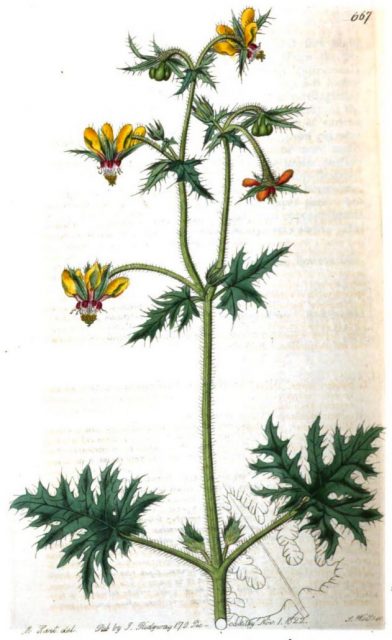Curiosities discovered while planning next year’s garden:
Got a spot in your yard where the drainage is lousy? Consider growing American pitcher plants (Sarracenia). The dead tree Park Seed catalogue says that they are easy to grow, though the more detailed online listing qualifies that claim.
If you have well-established ivy, you can grow ivy broomrape (Orobanche hederae), “An amazing, non-chlorophyll producing, parasitic plant, attaching itself to the roots of its host plant without actually harming it. Produces bizarely beautiful, orchid-like, purple-veined cream flowers on wax-like stems.”
There are a number of terrestrial orchids that you can grow from seed if you have the right conditions and plenty of patience. The technique for starting the plants is a bit different from what most gardeners are used to:
Do not sow seeds in pots or trays, they will not germinate. Just sprinkle directly onto undisturbed ground, or even a wild grassy area. Please be very patient as they are very slow indeed to come up and you will see no seedlings for at least a year. Do not move them until fully-grown as they grow best where they have chosen to germinate. Please be patient as they are worth the wait.
None of these are quite right for my little garden, though it would be interesting to experiment with orchids native to the prairie if I had more yard to work with.
I am considering growing a South American Loasa or two or three. The flowers are intricate and bizarre, perfect for stacked focus stereo macro photography. However, I need to be careful where I place them, because the plants sting. Chileflora offers many more species.
While looking for Loasa culture information, I discovered that they were well-known in Victorian England and were occasionally planted in gardens. (The illustration above is from an 1822 book describing exotics cultivated in Great Britain.) I gather that the plants can be treated as half-hardy annuals.1
Something I didn’t expect to find: Loasa lateritia socks. I suppose they’re wonderfully soft and warm when made with the right yarn, but I wouldn’t want to wear something with that name next to my skin.
Prairie Moon Nursery specializes in plants from the midwest and prairies. The genera that most interest me are best planted in the fall to germinate after winter, so I’ll probably place an order at the end of next summer.
On a different horticultural note: a discussion of the begonias in the tenth episode of Flip Flappers, a strange show that is getting stranger still and is likely the best show of the past few years.
Update: The eleventh episode of Flip Flappers focuses on white clover, such as you find in your lawn.
Notes
- This isn’t that surprising; Victorian gardeners also grew Heracleum mantegazzianum.


Oh crikey. This just reminded me I have to put some seeds in to cold/wet stratify for next semester’s research. Thanks!